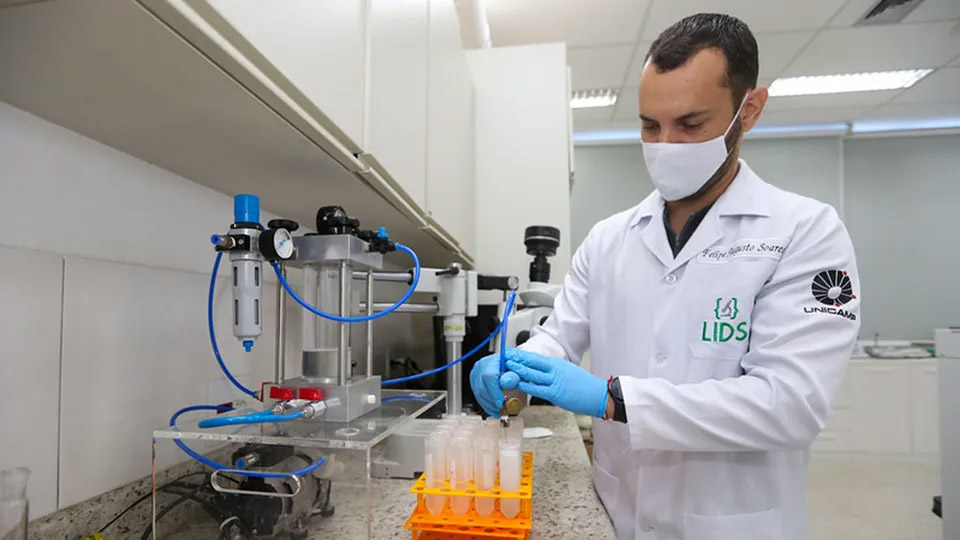Background

(DPMA Registration No. 302009038714)
Founded as a non-profit research association in Germany in 1990, Gesellschaft zur Förderung angewandter Informatik e.V.(the Society for the Promotion of Applied Computer Science, or “GFaI”) is engaged in the promotion and advancement of industrial research and development (R&D) in applied computer sciences through R&D contracts and services. GFaI has a staff of over one hundred, seventy of which are directly engaged in R&D activities. Approximately one hundred companies and institutions are members of GFaI, and it works in association with the Beuth Berlin University of Applied Sciences and the HTW Berlin University of Applied Sciences.
GFaI undertakes national and private R&D contracts. Most contracts are from national institutions and for these GFaI’s activities usually cover the entire process, from research to standardization and in-house production to licensing and complaints management. Beyond these contracts, GFaI also organizes its own R&D teams to innovate new software products and solutions for software-related problems in the computer science and information technology (IT) industries.
GFaI carries out its industrial R&D within the scope of the German Federation of Industrial Research Associations (AiF), which promotes applied R&D for the benefit of small and medium-sized enterprises (SMEs).
Research and Development
In 2001, a team of researchers at GFaI led by Dr. Gerd Heinz were working with potential customers such as Porsche AG to find a way to make industrial equipment – specifically automobiles and other vehicles – run as quietly as possible. The fundamental requirement of reducing vehicle noise is finding out where it comes from, and this is where the team faced the problem of accurately and easily pinpointing the exact source of different noises coming from a complex machine.
Dr. Heinz and his team knew the solution lay in enhancing already available methods of making noise visible to the eye. These methods were often difficult and time consuming to implement and a new approach was needed. The team’s research led to the creation of the acoustic camera, which essentially “listens with the eyes” to easily, rapidly and accurately locate noise sources in a machine. Making sound visible to the human eye, the acoustic camera’s speed and accuracy allows vehicle manufacturers to pinpoint and repair any defects.
The acoustic camera represents one of the many achievements of the research teams in GFaI. It has been a commercial success, and is mainly used by customers in the automobile industry for noise reduction and fault detection. However, its use continues to expand in industries such as construction equipment, biological research, music and domestic appliances.
Beyond innovating products such as the acoustic camera, GFaI continues to receive research contracts from companies and institutions in the automobile, steel, ceramic, robotics, cardiac medicine, dentistry, construction equipment and domestic appliance industries, in addition to the contracts received from the German Federal Ministry of the Interior. It also manages R&D projects among its network of scientists and technologists from member institutions. Such projects focus on finding solutions for computer aided facility management, process integration and creating a service network for sensors in the health services industry.
IP Management
GFaI believes that protecting leading edge technology through intellectual property rights (IPRs) paves the way for ensuring sustainable competitiveness. This belief comes through some early setbacks in managing its intellectual property (IP). Once, in connection with an important new invention, the success made the inventors feel so euphoric that they talked about it to the media. When a patent application was later filed at the German Patent and Trademark Office (DPMA), the media statements proved detrimental to the novelty of the invention. As such, the patent application was rejected due to a lack of novelty. Another early setback had to do with their misunderstanding of the legal requirements for registering trademarks, specifically related to issues surrounding distinctiveness. GFaI now ensures that the names it tries to register as trademarks are not general so as to meet the strict distinctiveness criteria.
Through overcoming these obstacles, GFaI developed a strong IP management strategy, which is summarized below.
- Product names are chosen carefully and any possible issues that may question their protection are critically analyzed and taken into account.
- Proper policy guidelines, including a defensive publication policy, are adhered to. In case of doubt, a patent application is filed with the DPMA before any public relations campaign is initiated.
- Strategically important fields of expertise are generally protected by IPRs, provided the effort is justifiable in terms of costs involved.
- The decision on whether or not to file a patent application is made promptly after the research results are known.
- GFaI recognizes that patent rights, not only protect its innovations against competitors, but also influence the purchasing decisions of its customers.
- The costs of international patent protection are not underestimated. GFaI also keeps in mind that a patent application always results in full worldwide disclosure of the invention and that it must actively defend its patent rights to discourage “free riders” that may come up through this disclosure.
GFaI does not have a predetermined budget for its IP rights management needs. In any given year, the allocation of financial resources for this purpose depends on the expected profit.
Patent Information
Patent information is an important resource for GFaI when determining which IP it will protect. Project leaders will first use publicly accessible patent databases of the DPMA and European Patent Office. If they feel that the information obtained is insufficient, publicly funded technology agencies are commissioned to conduct IP searches on state-of-the-art technologies, development trends and/or on the IP rights situation for a specific development project.
Patents

application PCT/EP2004/000857, PATENTSCOPE®
search)
Many of GFaI’s innovations are in the software engineering industry, and a key question that arises is how to effectively protect its new software. Due to the complexity and costs for worldwide IP protection in this industry, GFaI files patent or utility model applications for only about 20% of its technical solutions that are eligible for patent protection. This is because GFaI applies for a patent or utility model protection only after making a long-term evaluation of the costs and benefits to determine that patenting these technologies will fit into its overall strategic objectives.
Determining who owns the IP rights to software can also be difficult. In most cases, if something of worth is developed in connection with its research contracts GFaI alone has the right to file a patent application and grant any possible licenses. This is because customer requests are only a starting point of GFaI’s work and all R&D related to the software is conducted internally. However, cooperating partners of GFaI’s network of researchers are sometimes co-applicants for patents. If the developed software produces no direct and original technical solution, GFaI considers either claiming copyright or, if possible, “hiding” the software in the end product to ensure secrecy.
GFaI is the applicant or owner of several national patents and utility models and six applications with the European Patent Office (EPO). Anticipating the worldwide success of its acoustic camera, it filed an international patent application under the Patent Cooperation Treaty (PCT) for it in 2004. In 2007, it filed another PCT application for its method and device for determining the relative position of a first object with a second object. GFaI first files its patents nationally with the DPMA and then internationally by filing PCT applications.
Trademarks
GFaI owns five national trademarks for its product names InFa-Net, Sanisens, Meseda, CLAT and AUTINDEX. It also owns a national trademark for its acoustic camera logo.
Commercialization
GFaI commercializes most of its products itself. In the case of the acoustic camera, it was first sold in 2003 directly from GFaI. It assembled, tested and shipped the cameras to its customers. In 2007, GFaI created GFaI Tech GmbH (GFaI Tech), a wholly owned subsidiary of GFaI, to assemble, manage and market the acoustic camera. In 2008, GFaI Tech took on this role, and is now its exclusive worldwide marketer.
Licensing and Partnerships
GFaI is engaged in strategic licensing of its technical solutions that it does not market itself. Presently, it obtains the biggest licensing income from software applied in the dentistry industry for tooth restoration.
GFaI’s un-bureaucratic, proactive approach relies on the teamwork of its members. Through these members, GFaI has built a successful network of scientists and technologists from SMEs, large companies and publicly funded institutions. This network enables GFaI to engage in a large variety of joint research projects and R&D contracts, specifically to work on R&D innovations and applications in the information technology (IT) industry.
Business Results
Taking the lessons learned from its early IP setbacks, GFaI has created a strong IP strategy through which it has grown significantly. Starting with less than ten staff and with limited financial resources and partners, GFaI has increased its staff tenfold, has over one hundred members and has an annual business volume of approximately €8 million. Its acoustic camera has been a scientific and economic success and is now marketed worldwide, with export revenue exceeding €1 million.
In addition to its IP strategy, the following three factors have solidified GFaI’s success:
- Great scientific potential for innovative practice-oriented solutions tailored to meet customer needs;
- No budget limits for international patent protection for inventions regarded as strategically valuable; and
- Very active licensing policy with several license grants (due to existing research contracts with customers) and license acquisitions.
Combined with GFaI’s strong IP strategy, these factors have helped it grow; facilitating increased partnerships and further innovation.
Lessons Learned from IP Management
GFaI realizes that the most effective protection for a small entity like itself lies in continuously developing new and improved technical solutions to the technical problems before it. It considers this to be the only way to always stay one step ahead of its competitors. Patent protection is intrinsically linked with this goal and is very important for marketing GFaI’s products, as patenting discourages copying, strengthens its positive image and positively influences its customers in their purchasing decisions.



